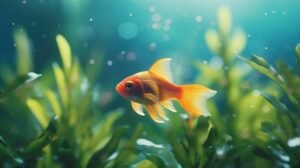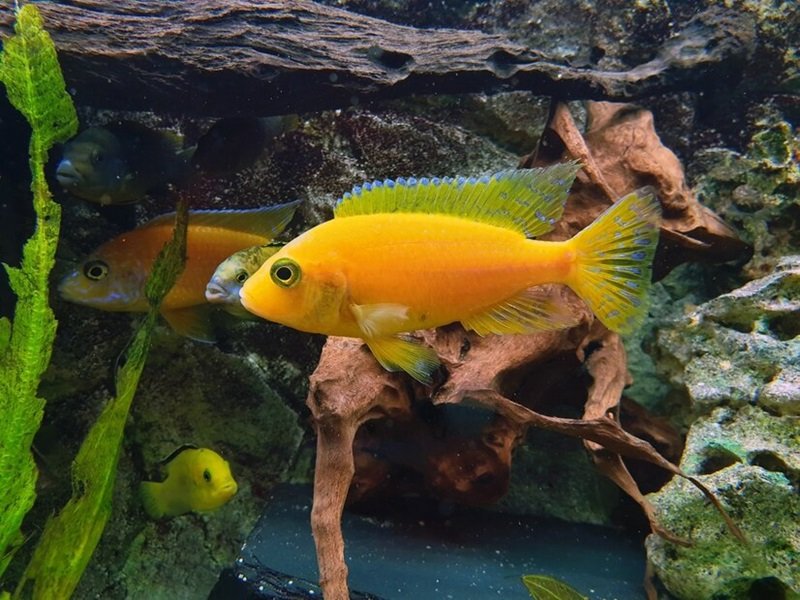Underwater photography offers a unique opportunity to capture the stunning beauty and vibrant colors of aquatic life. Whether you’re an amateur photographer or a seasoned professional, photographing fish and other marine creatures in aquariums presents its own set of challenges and rewards. For those looking to explore this fascinating hobby, visiting a well-maintained aquarium or Fish Park is an excellent way to get started. Searching for a “fish aquarium park near me” can lead you to local treasures that provide ample opportunities for breathtaking underwater shots.
Why Aquarium Photography?
Aquariums offer a controlled environment where you can practice and hone your underwater photography skills without the need for scuba diving or other specialized equipment. The diverse species of fish, corals, and aquatic plants found in these kinds of fish park environments present an array of colors, textures, and compositions that are perfect for creating stunning images.
Tips for Capturing the Best Shots
- Use the Right Equipment:
- A good quality camera with manual settings is essential for aquarium photography. DSLRs or mirrorless cameras with macro lenses are ideal for capturing close-up details of fish and other small marine creatures. If you’re using a smartphone, consider investing in an external lens attachment to improve image quality.
- Lighting is Key:
- Aquariums are often dimly lit, so you’ll need to adjust your camera settings accordingly. Use a low ISO setting to reduce noise, and try to shoot with a wide aperture to allow more light into the lens. Avoid using flash as it can cause reflections on the glass and disturb the fish.
- Get Close and Be Patient:
- Capturing the intricate details of fish and marine life requires getting close to your subject. Move slowly and be patient, as fish can be fast-moving and unpredictable. Waiting for the right moment when the fish is in an interesting position can make all the difference in your photos.
- Avoid Reflections:
- Reflections from the glass of the aquarium can ruin an otherwise perfect shot. To minimize reflections, position your camera lens as close to the glass as possible and shoot at a slight angle. Wearing dark clothing can also help reduce the chances of your reflection appearing in the photo.
- Experiment with Composition:
- Aquariums provide a wealth of opportunities to experiment with different compositions. Try capturing fish in motion, focusing on the vibrant colors of corals, or zooming in on the intricate patterns of aquatic plants. The more you experiment, the more unique and captivating your photos will become.
Finding the Perfect Location
When looking for the ideal spot to practice your underwater photography, searching for a “fish aquarium park near me” can yield great results. These parks often feature a variety of exhibits, from large tanks housing sharks and rays to smaller tanks with colorful reef fish. A Fish Park offers a range of subjects to photograph, from tiny seahorses to majestic jellyfish, providing endless opportunities to capture the beauty of aquatic life.
Post-Processing Your Images
After your photography session, post-processing is an important step to enhance your images. Use software like Adobe Lightroom or Photoshop to adjust the exposure, contrast, and color balance. Sharpening and noise reduction tools can also help bring out the details in your photos, making them even more striking.
Conclusion
Underwater photography in aquariums is a rewarding way to explore the beauty of marine life. With the right equipment, techniques, and a bit of patience, you can capture stunning images that showcase the vibrant world beneath the water’s surface. Whether you’re visiting a local Fish Park or another fish aquarium near you, you’re sure to find endless inspiration for your next photographic adventure.
FAQs
What equipment do I need for aquarium photography?
A DSLR or mirrorless camera with a macro lens is ideal for capturing fine details. If using a smartphone, consider an external lens attachment. A tripod can also help stabilize your shots, and polarized filters may reduce glare and reflections on the glass.
How can I avoid reflections when photographing in an aquarium?
To minimize reflections, press your camera lens close to the glass and shoot at a slight angle. Wearing dark clothing and avoiding direct flash can also reduce the chances of reflections appearing in your images.
What are the best camera settings for aquarium photography?
Use a low ISO to reduce noise, a wide aperture to allow more light into the lens, and a fast shutter speed to capture fast-moving fish. Manual mode gives you greater control over exposure and focus, especially in low-light conditions.




